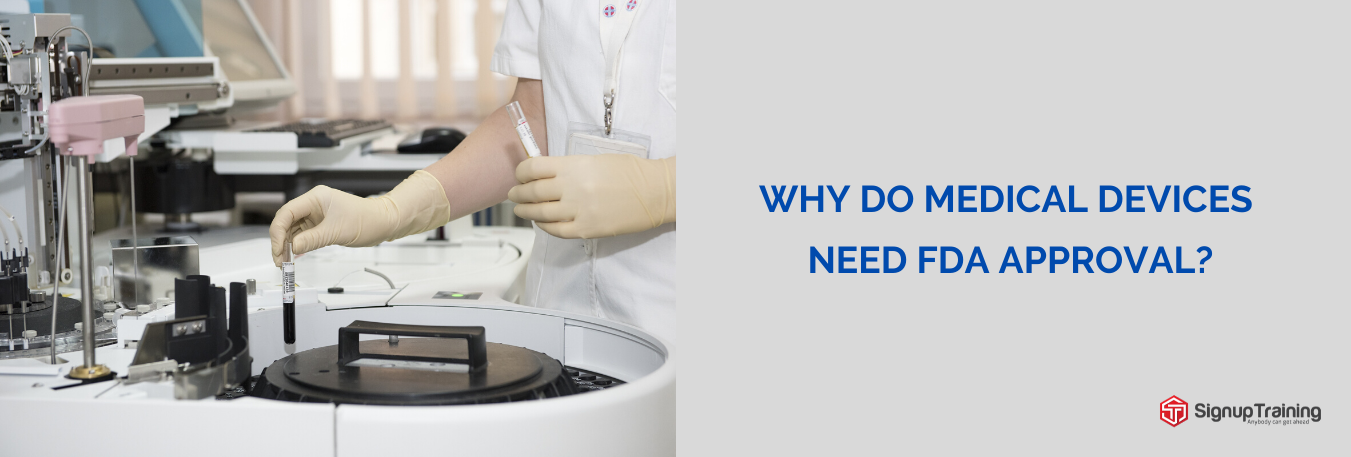Medical Device Regulations in the USA

Medical device manufacturers and distributors must have a good understanding of the Medical Device Regulations in the USA to operate their units successfully. This industry is highly driven by compliance and regulations, as safety is of utmost priority.
In the US, the medical device industry is regulated by the Food and Drug Administration (FDA). Medical devices are classified into 3 segments based on the risk factor – Class I, Class II and Class III, from lowest to highest risk.
There are 7 FDA regulations for Medical Devices:
1. Establishment Registration & Medical Device Listing
All medical device manufacturers and distributors must register themselves with the FDA in order sell in the market. The registration should be done electronically using the FURLS System (Unified Registration and Listing System). All registered companies are required to verify this information annually. The registration charges are usually revised every year.
2. Premarket Notification 510(k)
All medical devices for the purpose of human utility need to submit a premarket notification regardless of which class they fall under. For each of these devices with 510(k0 notification, the government must provide a clearance certificate to enables sales in the market. The FDA sends their approval in writing that the device is substantially equivalent (SE) and safe for commercial distribution. This process usually takes a period of 90 days from submission.
3. Premarket Approval (PMA)
Premarket approval is conducted by the FDA to check if the device is safe and effective. All Class III devices must go through a premarket approval as they’re considered to be high risk. This is one of the critical requirements that all medical devices must pass in order to start their marketing and distribution activities. Only once sufficient scientific evidence is available about the safety of the device can they be given a premarket approval. It could take as long as 180 days or even more to get a go ahead.
4. Investigational Device Exemption (IDE) for Clinical Studies
The Investigational Device Exemption is a provision given to manufacturers to allow them to collect relevant safety and effectiveness data before its released for commercialization. This data can be used by the manufacturers to as supporting information while applying for premarket notification and premarket approvals.
5. Quality System (QS) Regulation
The Quality System Regulation provides manufacturers and distributors clear guidelines about the regulatory norms for facilities and controls to be implemented throughout the lifecycle of the medical device. This includes activities related to purchase, packaging, storing, labelling and servicing. The QS Regulation provides a broad framework that must be followed by all medical device manufacturers.
6. Labelling Requirements
All medical devices must be appropriately labelled before they’re distributed for commercial purposes. The label should contain a description and information regarding usage.
7. Medical Device Reporting
As per FDA guidelines, it is mandatory to report any death or serious injury caused due to a malfunctioning medical device. This is to enable the timely detection of any issues with the medical device so that appropriate measures can be taken to avoid further accidents.
We’ve provided a short overview of the Medical Device Regulations of the FDA in the USA. However, you can sign up for a seminar on Medical Device Regulations with www.signupTraining.com to have a deeper understanding of this topic.
Trending now

Why do medical devices need FDA approval?
Blog
Top 10 HR Compliance Challenges in USA
Blog
Medical Device Regulations in the USA
Blog
Understanding IEC 62304 & Compliance Tips for Medical Device Software Developers
Blog
What is HIPAA (The Health Insurance Portability and Accountability Act) ?
BlogFDA Steps to Ensure Quality of Foreign Products
Blog
6 Skills that Make for a Great Human Resources Manager
Blog
Why do we have OSHA Regulations?
Blog21 CFR part 11 compliance - key factors that every FDA regulated business should know
BlogWhy is 21 CFR Part 11 Compliance Important?
BlogWhat are the Key Factors (Essentials) for 21 CFR Part 11 Compliance?
BlogFDA Regulated Firms Must Ensure Part 11 Compliance to Generate Accurate and Usable Data
Blog
Know how to Survive an OSHA Audit
Blog
Top 5 Job Opportunities in Biotechnology
Blog
5 Key functions of HR Management
Blog
Cybersecurity Threats Upcoming in 2023
Blog
Why Should You Learn About OSHA's Guidance on Substance Abuse Testing?
Blog
Importance of SOPs in the Pharmaceutical Industry
Blog
Non-Compliance on 1099 Filing: Consequences and Best Practices
Blog
Artificial Intelligence (AI) in Healthcare: A Boon or Bane?
Blog.jpg)
How to Ensure Compliance with the I-9 Form: A Guide for Human Resources
Blog
Effective OSHA Audit Observations and Best Practices
Blog
How to Land Your Dream Job in Accounting: Top Tips and Career Options
Blog
Cultivating Connections: How to Foster a Thriving Culture with Your Remote Workforce
Blog
The Transformative Power of Artificial Intelligence in Biotechnology
Blog.png)
6 Steps to Building an Effective Hazard Communication Program (EHS)
Blog